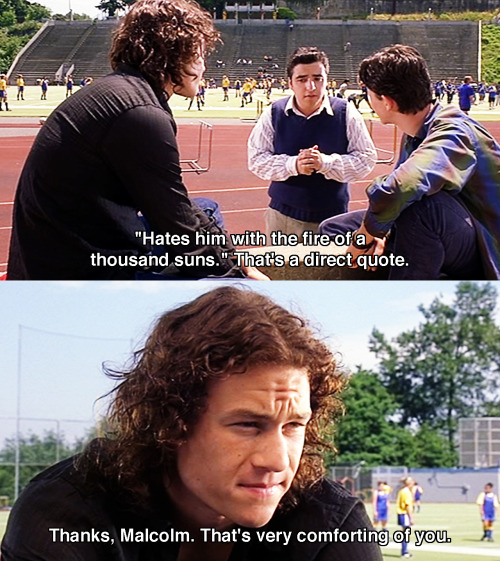Brainstorming SUCKS. Is there something better?
- 12/05/2018
- creativity, tool - ideation
Well, OK, „SUCKS” in all caps might be a strong word. But there, I said it: I do not like brainstorming, almost „hate it with the fire of a thousand suns.” This widely used technique, advertised and encouraged by the most prominent design thinking/creativity brains, is – in my eyes – not best at all! Not unless I change the rules. So let me deconstruct this concept and tell you exactly why I think it’s bull and – more importantly – how you can make it better!
Let’s start at the very the beginning, a very good place to start. Standard brainstorming, the most basic one – and the most popular at that – has a few rules leading to alleged success.
My favorite (and the shortest) explanation comes from the IDEO’s Method Kit, here in a nutshell:
- Defer judgment.
- Encourage wild ideas.
- Build on the ideas of others.
- Stay focused on the topic.
- One conversation at a time.
- Be visual.
- Go for quantity.
Sounds great, right? A free, inclusive, crazy way to produce ideas (and it’s so much better to exercise the idea muscle when we go mad!) While I agree with the rules, I also noticed that the interpretation and involvement changes based on the environment. When you deep dive into how that works in a standard team, you might be in for a surprise. In times that praise collaboration, encourage the exchange of ideas, and cultivate cross-border discussions, the pressure on brainstorming and its positive outcomes are pretty high.
So sometimes this noble concept can work in a completely different way. People don’t feel confident and welcomed enough to go for the crazy ideas (what if my boss thinks I’m not qualified!). Frequently the general notion is that „oh, someone else will say something so I can lay off this one, ha!” and… well, that’s the opposite of what we want, isn’t it! Last, but not least, standing around the whiteboard makes the team try and figure out the middle ground, instead of producing a multitude of crazy ideas. We automatically peruse the already glued sticky notes, and our brains drift towards something that would be wild, but not wild enough, and innovative, but less creative than some already visible ideas.
It doesn’t mean that 100% of the above happens in 100% of the teams, of course, but we tend to fall into at least one of those drawers. Results? Well, not very brainstorming-ly.
A QUICK FIX
I still use brainstorming – guilty! Not every time can I get out of the most popular method, and frankly many times it’s the „best for the occasion” kind of thing. If I have to go with this one, there is a quick fix I apply – silent brainstorming.
Silent brainstorming is a fancy name for producing ideas individually, without discussion and looking at the smorgasbord of sticky notes. That gives a bit of privacy, so we don’t feel judged by others, and also eliminates our crazy thinking that our ideas are stupid (spoiler: they’re not, the craziest the better!). And you can still build on the ideas of others when we move forward and share your ideas, and then brainstorm together!
CHANGE THE GAME
Brainstorming Fix
- Tool goal: eradicate unstructured discussion and inspire new ideas without the pressure of creativity
- No of participants: 1 facilitator; groups no limit (but small groups work better)
- Time needed: max. 1 hour (no time for long discussion)
- Supplies needed: deck of empty eraseable cards, post-it notes, pens, stopwatch
Walkthrough
- Give each participant a bunch of empty cards or post-its and a pen.
- Set the rules: 30 seconds work time, 10 seconds break; final phase is a bit longer and you can adjust it to how the group works.
–> First round:
- Participants write their solution ideas for the problem in question, one idea on one card (silent brainstorming).
- Immediately after, they put the card face-down, without discussing it, without talking to others.
–> Break, and during the break, your role is to shuffle the cards, so they can’t remember which ones are theirs! Then, second round – second 30 seconds:
- Each participant picks one card from the table and adds something to the idea on it – write an extension or a new one inspired by it. They should do it on a new card.
- Then, they put all cards – old and new – back on the table, face-down, making a whole new collection.
–> Second break, and you reshuffle the ideas. At this point, you have a bunch of original ideas, and a bunch of ideas built/inspired by the OG ideas. You can do as many of the inspiration rounds as you wish, depending on how your group responds. Then, third round:
- Flip the cards faces-up.
- Divide participants into groups of two, max three.
- Each group goes over the ideas and adds five more – they can discuss them together (ideally, they should discuss bias-free, but in reality, you won’t have enough eyes to watch over all the groups, and that’s ok; be mindful of time).
–> OK, with this new batch of ideas you should have plenty to choose from at this point! After that, you have one last round before you move to categorize them further, but for one, final round – you can extend it, as it usually takes longer to reach consensus:
- Each group discusses the ideas very quickly, listing reasons why they like it (no criticism, only positivity, and to de point reasons).
- They should come up for at least four ideas per group.
- Collect the ideas together so all groups can get back together and discuss them further.
As a result…
- There are buckets of new ideas, inspired ideas, and any other ideas without poking and probing the participant to „just be creative.”
- The groups work in a more structured ways.
- There is no pressure of standing in front of an empty board.
- Fast pace and gamification supports creativity without pressure.
In addition, you’ll end up with buckets ready to be categorized and taken further – and whatever method you use (priority axis, dot voting, six thinking hats, etc.) will work! I talk a bit about some of them on this blog, just click here.
This game that I’ve devised is by no means perfect, and the only method that should now be used to brainstorm, nay! However, it gives the participants the freedom of thinking, the ability to move and exercise the „let’s go for a walk” muscle a bit but also work in pairs/groups for a second (before going back to group exercises after).
Try it sometimes, let me know how it works, or how you changed it to suit your workshop! And if you’re interested in more ideas on how to hack brainstorming, below are great tips from Adam Grant, who observed the team behind The Daily Show with Trevor Noah! Very interesting indeed!

Copyright © 2017-current Gosia Pytel. All rights reserved
Terms and Conditions | Privacy and Cookie Policy || secretcats.pl🧡tworzenie stron internetowych
